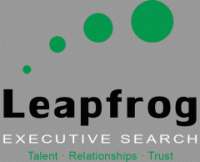You Can’t Build a Puzzle if all the Pieces are Round
Category : 2017
Those jigsaw puzzles with pieces that are all the same size and shape were designed by people who love to inflict pain on others. Imagine what kind of person would create a puzzle with pieces that are only round. That person seems to be driving how teams are built in companies today . . .
From Starbucks to Salesforce to Staples, workplace diversity is getting some much-needed attention. The Census Bureau says the U.S. population is over 35 percent multicultural. That fact and some uncomfortable analytics are promoting companies to actively pursue greater diversity in their teams.
Beyond it being the right thing to do, building greater diversity across our enterprises has a direct impact on results. McKinsey & Company found “a linear relationship between racial and ethnic diversity and better financial performance: for every 10 percent increase in racial and ethnic diversity on the senior-executive team, earnings before interest and taxes (EBIT) rise 0.8 percent.” Boston Consulting Group’s study of 171 companies found “a clear relationship between the diversity of companies’ management teams and the revenues they get from innovative products and services.”
But one dimension of diversity we don’t hear much about—where the round puzzle piece is dominant, is cognitive diversity. Harvard Business Review researchers Alison Reynolds and David Lewis define cognitive diversity as “how individuals think about and engage with new, uncertain, and complex situations.”1
The impact of cultural diversity is lost if companies continue to hire “in their own image” or if recruiters take the safe route and only present candidates who are highly skilled and highly compliant. To streamline and accelerate decision-making, many senior leaders build teams of executives that think alike and readily agree, when what they need is a better process for making decisions within highly divergent points of view.
From problem solving to decision making to innovation to market expansion, executive teams accomplish more when there is both cultural diversity and cognitive diversity. In other words, the most productive teams don’t readily agree. They engage in what Patrick Lencioni calls “productive, ideological conflict: passionate, unfiltered debate around issues of importance.”
That kind of diversity will make people uneasy. It will challenge the insecure. Cognitive diversity will force static organizations to change their xenophobic cultures and willingly consider issues from multiple angles, giving equal consideration to unpopular options when making decisions that solve real problems and accelerate profitable growth.
Cognitive diversity is apparent in teams that pursue—
- Collaboration more than cohesion.
- Alignment more than agreement.
- Unity of purpose more than unanimity of thought.
Regina Dugan, head of Facebook’s secretive Building 8 hardware team is right. “You have to get to the place where you aren’t made comfortable by the fact that everyone is the same, but rather feel inspired by how different we are.”
Executive branding helps a leader define that difference and use it productively to advance a career—and bring value to an enterprise.
1Harvard Business Review, March 30, 2017. Teams Solve Problems Faster When They’re Cognitively Diverse. https://hbr.org/2017/03/teams-solve-problems-faster-when-theyre-more-cognitively-diverse
